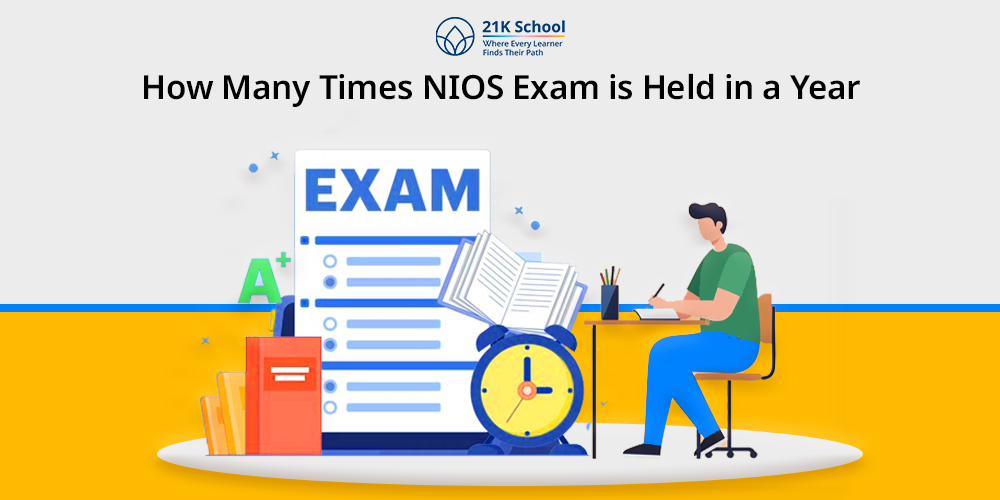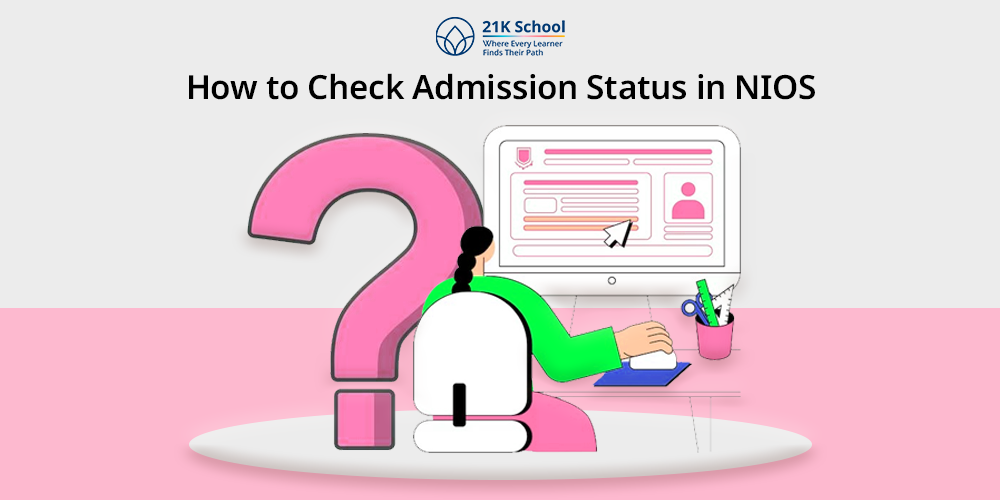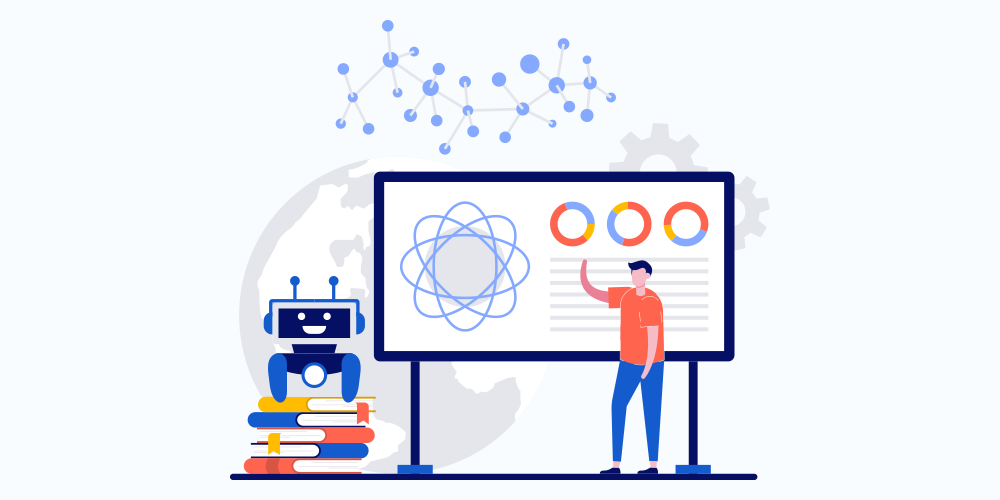
The education system has largely been dependent on teachers for many years. These valued individuals not only happen to be well-versed in the topic.
But are also capable of shouldering the great responsibility of helping students understand complicated topics with ease.
There is much that comes with the job. In recent years, however, there have been many changes. Artificial intelligence is taking over different aspects; things are changing, and hence, many rightfully wonder if artificial intelligence in education can replace teachers.
However, it must be understood that it is not quite possible because several factors have a significant role. Let us look at them in detail.
Table of Contents
Reasons Why AI Cannot Replace Teachers?
No matter how advanced technology has become but it cannot bridge the gap between how human interact vs how AI tool interacts.
Have a look at some of the highlighted reason as to why AI will unable to replace teachers-
1. Development of critical thinking
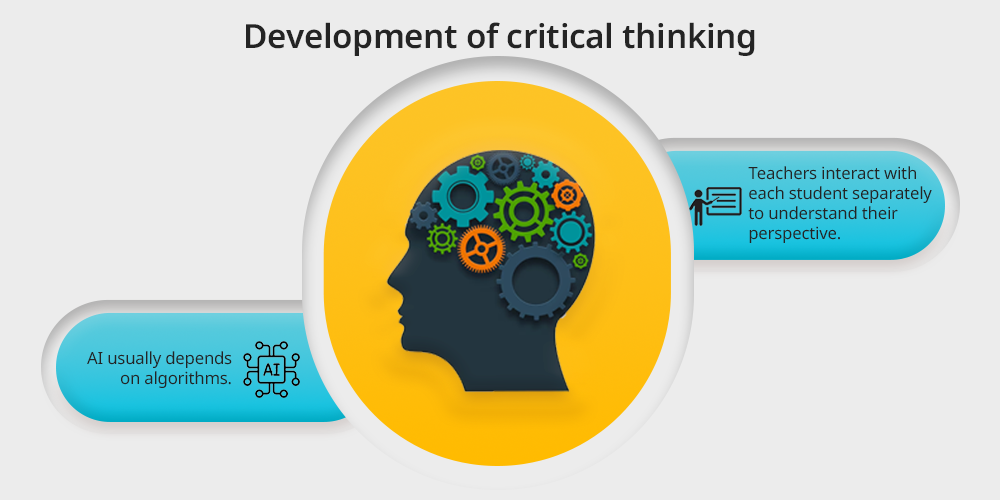
A teacher, on a human level, has a crucial role in the development of students. It can be their skill; it can be creativity. It can help them improve their analysis skills and much more.
AI usually depends on algorithms. However, teachers interact with each student separately. Understand their perspective and help them improve.
They can be more insightful when it comes to questions that might be open-ended and discussions that require critical thinking. Teachers help develop an environment that encourages growth; AI can only support the same with minor prompts.
Also, read Exploring the Future of Artificial Intelligence in Education to how AI will help in education
2. Building an emotional connection
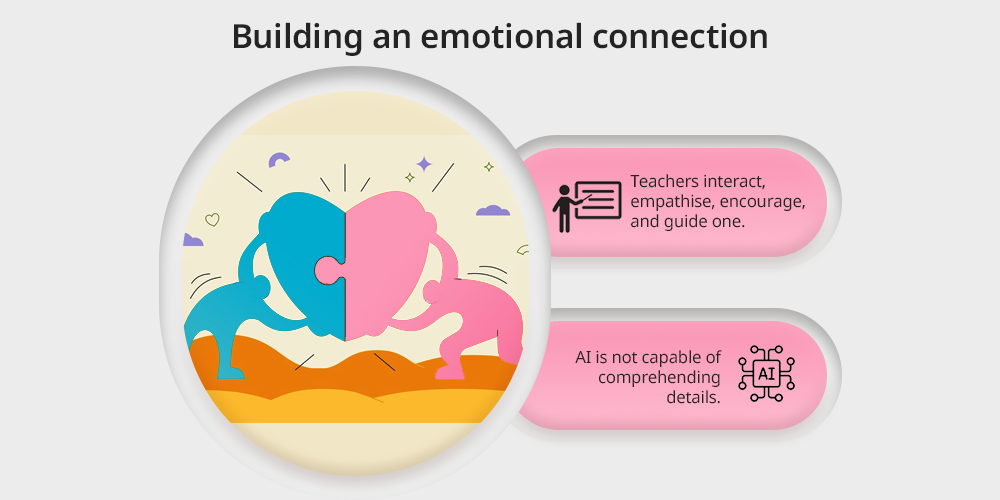
Teachers not only help with education but also develop an understanding for each student. They interact, empathise, encourage, and guide one. AI is not capable of this approach.
It can analyse the data and adapt. It is, however, not capable of comprehending details, such as the mood of an individual or their body language. This hinders proper growth in many skills.
Learn more about Exploring the 5C’s of Online Schooling
3. Adaptability
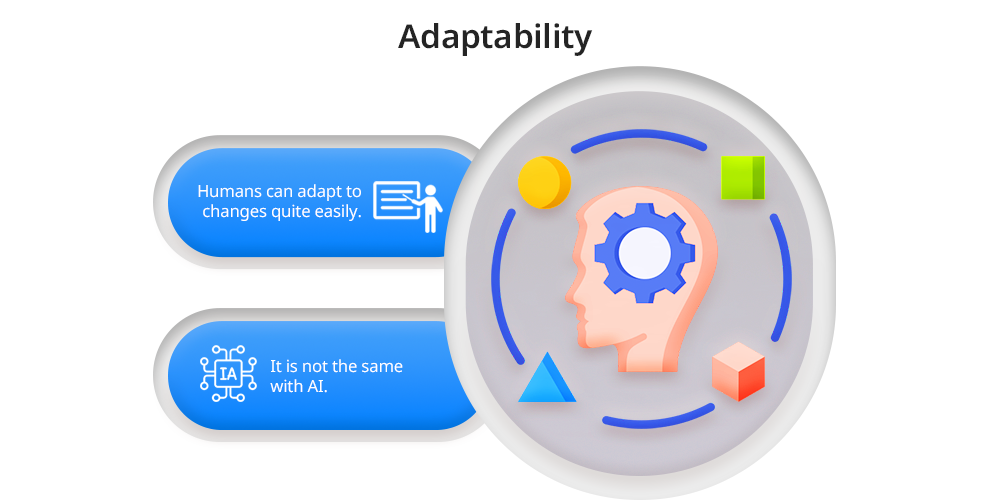
Humans can adapt to changes quite easily; however, it is not the same with AI. The teachers can identify a student who might be struggling or not engaged in the subject.
They can hence modify their approach to teach accordingly. However, AI is only in the initial stages of offering personalisation. It cannot replicate the experience to help students grow on a personal scale.
4. Insightful guidance
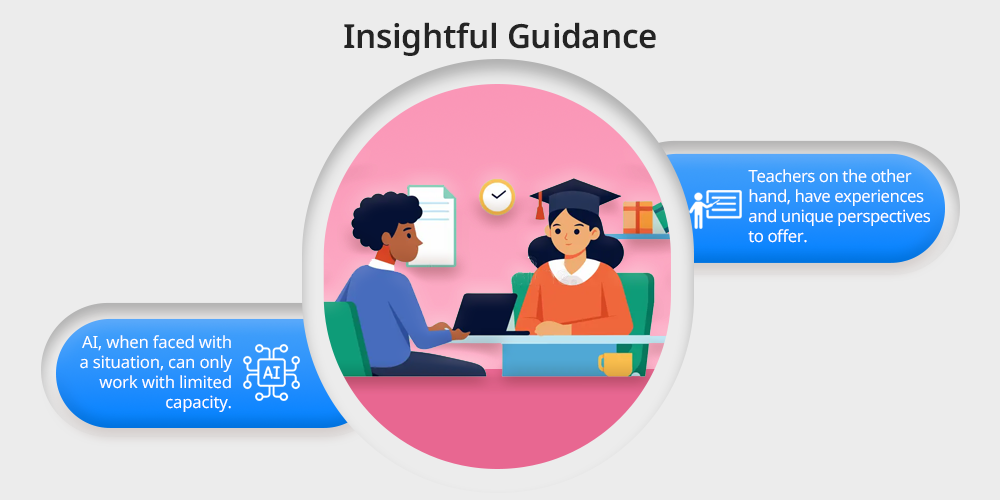
Humans excel in complex situations, specifically when faced with problems. It requires that one have an understanding of various things and the context related to the same.
Humans similarly can recognise various issues in terms of emotional or academic situations.
When it comes to students, teachers guide them with much patience. For they have the needed insight. AI, when faced with a situation, can only work with limited capacity.
Teachers on the other hand, have experiences and unique perspectives to offer.
Learn Teaching with ChatGPT: How They Are Using AI in Education to know how AI driven tool like ChatGPT can help in education
This cannot be replicated by artificial intelligence in education. It is due to this understanding and humane aspect of things that teachers cannot be replaced by artificial intelligence.
5. Ethical guidance
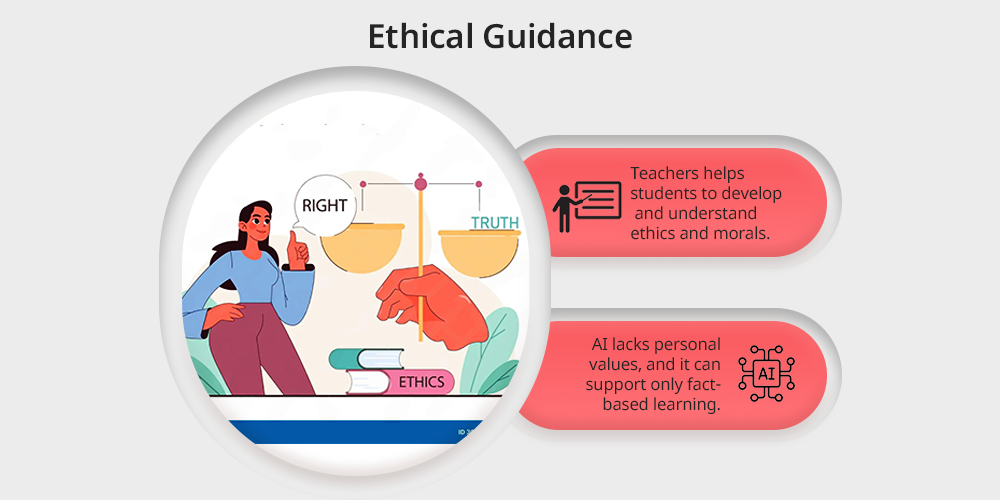
Ethics happens to be quite a challenging concept when it comes to AI. However, it strongly shapes the understanding and the way one leads life in the real world.
Teachers play a great role in helping students develop and understand ethics and morals.
AI lacks personal values, and it can support only fact-based learning; it lacks character or moral complexities.
Teachers, on the other hand, provide a human perspective. It greatly influences the minds of the students and prepares them better for the challenges of the real world.
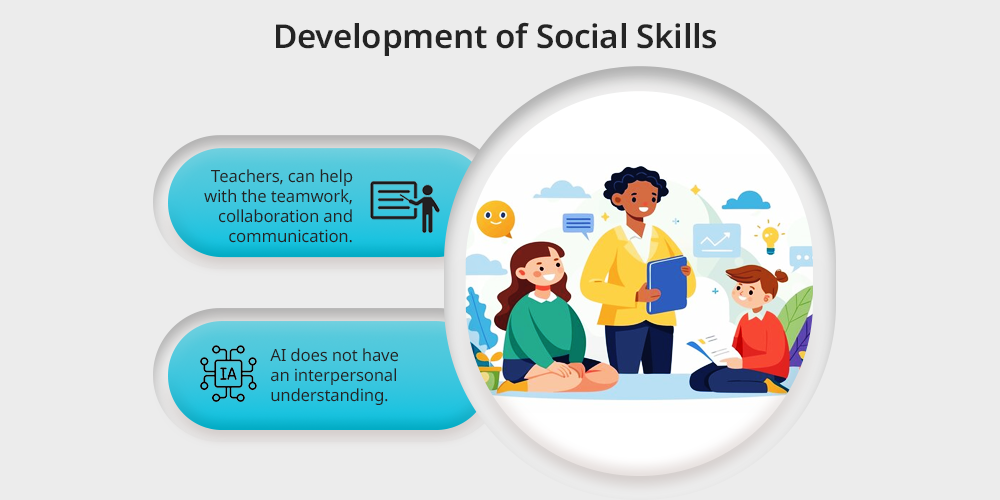
Artificial intelligence cannot play a significant role in social skills. It is because it does not have an interpersonal understanding of the same.
Human teachers, on the other hand, can help with the development of teamwork and collaboration as well as proper communication.
Activities such as discussions, class projects, and more allow the students to interact effectively. The teachers can mediate such interactions, allowing students to better understand how such interactions work and develop their social skills.
AI, unlike human teachers, lacks empathy, which is quite important for one in the real world.
Learn precisely about SEL- Social-Emotional Learning
7. Influence
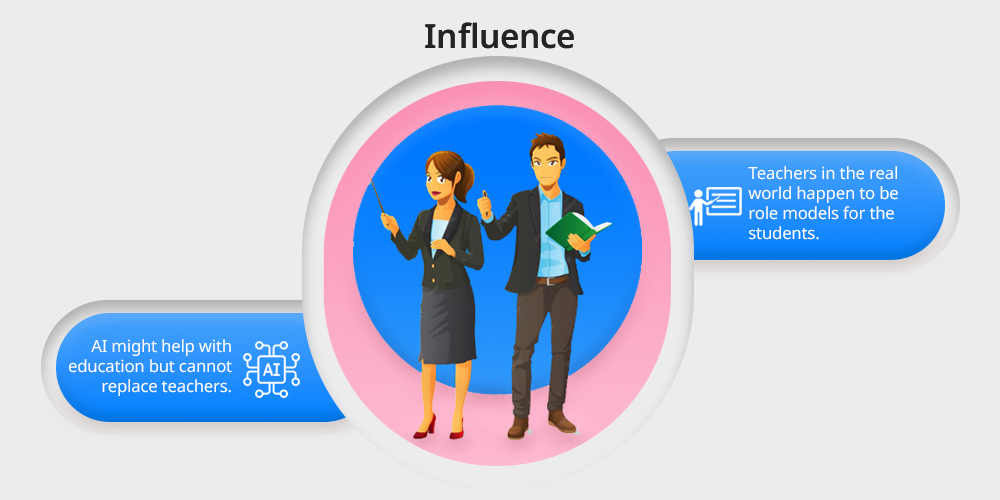
Teachers in the real world happen to be role models for the students; they inspire their growth and learning. It is through these individuals that students get to see values such as resilience and empathy.
They learn to perceive and become curious while developing integrity; teachers have stories, experiences, and kindness to offer.
It is always based on real-life situations that can help shape a student’s future in a way that artificial intelligence in education cannot. It is due to this that AI might help with education but cannot replace teachers.
8. Development of personal connections
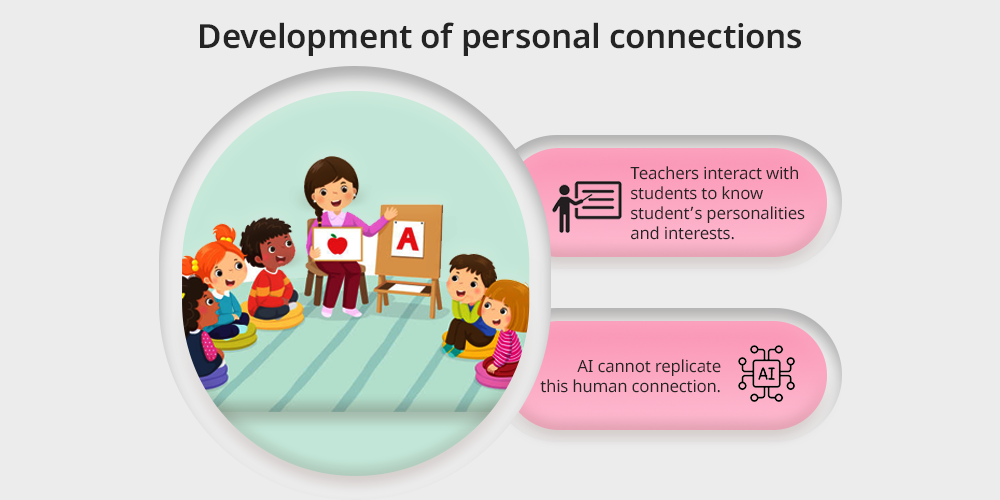
Teachers essentially interact with students on a human level. They understand the student’s personalities and interests.
They identify their strengths and help with building relationships that last and help students foster a sense of belonging.
These connections help create an environment that not only feels safe but provides students with a sense of value and motivation; AI cannot replicate this human connection.
Teachers help students thrive in the real world and provide them with the needed support. They act as figures who care and encourage one to seek success and excellence.
Pros of artificial intelligence(AI) in education
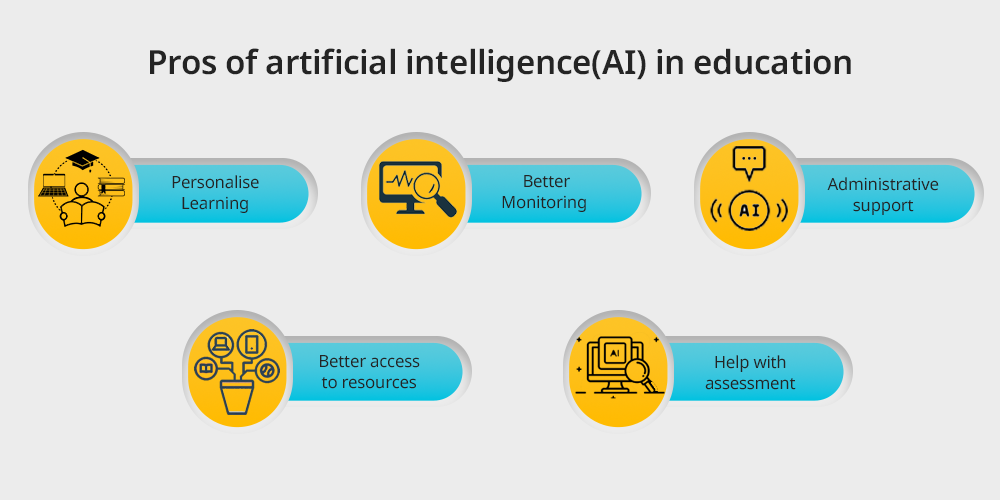
It is easy to understand why artificial intelligence in education cannot replace real-life teachers. However, making use of this technology can bring about a significant change and enhance the overall approach.
Integrating AI with traditional education can help the education system become better in the following ways:.
1. Personalise Learning:
Artificial intelligence can cut down on the time required to create a personalised learning approach. This can greatly help teachers address the needs of each student in an effective way.
2. Better monitoring:
With the help of advanced technology, the progress of each student can be tracked better. It can also help shed light on places that need improvement. Allowing teachers to support the students effectively.
3. Administrative support:
The repetitive tasks can be automated with AI to reduce the workload of the teachers.
4. Better access to resources:
Artificial intelligence can help students gain access to many resources that can help improve their education. Teachers can also collect various insights to improve their teaching approach.
5. Help with assessment:
It can greatly cut down on the time required for assessment and feedback. With real-time processing capabilities, it allows teachers to focus better on their approach to teaching.
Rather than spending extensive time on making prolonged assessments.
Conclusion
The field of learning is diverse and vast. The topics of interest keep changing. The interests of students also vary.
It is thus important that humans make use of advancing technology to improve their approach and keep up with the times.
However, artificial intelligence in education can never replace a teacher but effectively support education. The integration of advancement in this technological approach in education can be quite helpful.

